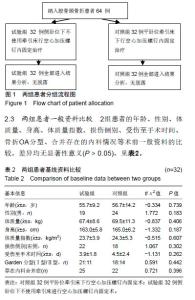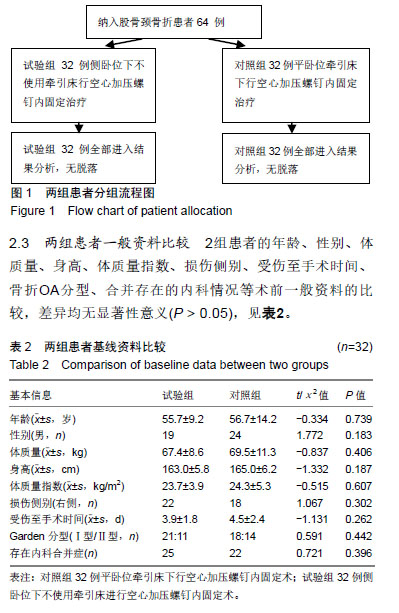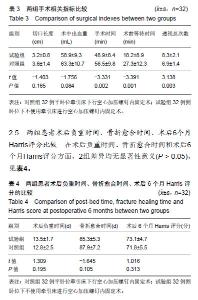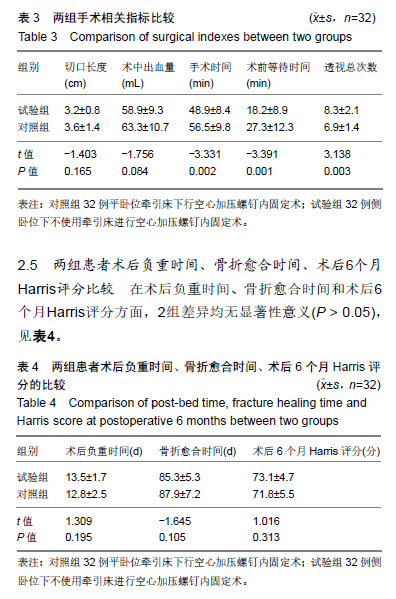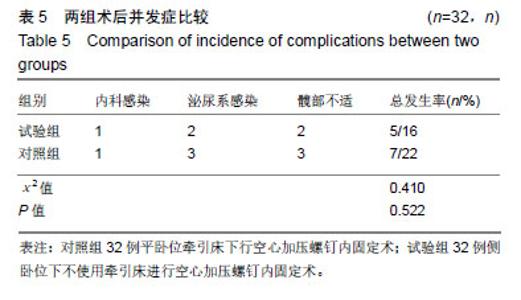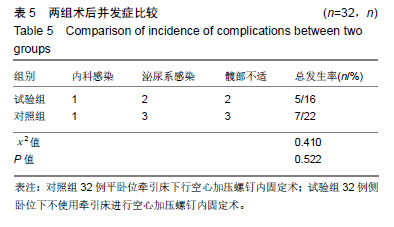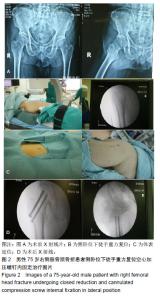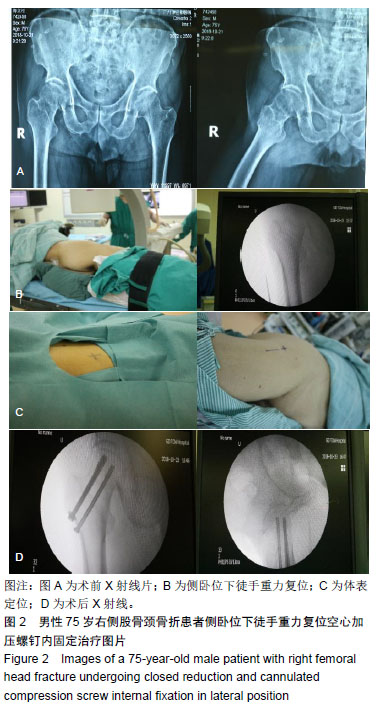| [1]Aguado-Maestro I, Escudero-Marcos R, García-García JM, et al. Resultados y complicaciones de la osteosíntesis de fracturas pertrocantéreas de fémur mediante clavo endomedular con espiral cefálica (clavo femoral proximal antirrotación) en 200 pacientes. Revista Española de Cirugía Ortopédica y Traumatología. 2013;57(3): 201-207.[2]李百通,周天翼,刘振,等. 老年股骨颈骨折GardenⅡ型治疗方案的选择策略与进展[J]. 中国组织工程研究,2017,21(3):445-449.[3]Meng F, Orthopedics DO. Treatment of femoral neck fracture by internal fixation with hollow compression screws. J Aerospace Med. 2016.[4]吕金柱,朱求亮,罗建民,等. 4枚空心钉与锁定钢板内固定治疗粉碎性股骨颈骨折临床疗效分析[J]. 中国骨与关节损伤杂志,2017,32(12): 1283-1284.[5]王子越,董启榕,徐又佳,等. 人工股骨头置换与内固定治疗高龄患者无移位型股骨颈骨折的疗效比较[J]. 中华创伤骨科杂志,2016, 18(5): 369-374.[6]孙晓,殷照阳,霍永峰,等. 空心加压螺钉治疗不同年龄段股骨颈骨折患者的疗效及对功能恢复的影响[J]. 中国老年学杂志, 2017,37(8): 1975-1977.[7]Kumar N, Kataria H, Yadav C, et al. Evaluation of proximal femoral locking plate in unstable extracapsular proximal femoral fractures: Surgical technique & mid term follow up results. J Clin Orthop Trauma. 2014;5(3): 137-145.[8]Kokoroghiannis C, Aktselis I, Deligeorgis A, et al. Evolving concepts of stability and intramedullary fixation of intertrochanteric fractures—A review. Injury. 2012;43(6): 686-693.[9]Harris WH. Traumatic arthritis of the hip after dislocation and acetabular fractures: treatment by mold arthroplasty. J Bone Joint Surg. 1969;51(4): 737-755.[10]王星明,张良,纪东兴,等. 半髋关节置换与空心加压螺钉内固定治疗高龄骨质疏松性股骨颈骨折的疗效对比分析[J]. 宁夏医学杂志, 2017, 39(10): 904-906.[11]刘国印,贾小宝,张勇,等. 老年人营养状况与髋部骨折术前隐性失血的相关性研究[J]. 中华骨与关节外科杂志, 2018, 11(1):15-19.[12]翁绳健,吴立忠,李炜明,等. 肾阳虚股骨颈骨折患者松质骨组织差异蛋白质的表达分析[J]. 中华中医药杂志, 2018, 33(12): 5397-5401.[13]Herzog J, Wendlandt R, Hillbricht S, et al. Optimising the tip-apex-distance in trochanteric femoral fracture fixation using the ADAPT-navigated technique, a longitudinal matched cohort study. Injury. 2019.[14]Papanastassiou ID, Mavrogenis AF, Kokkalis ZT, et al. Fixation of femoral neck fractures using divergent versus parallel cannulated screws. J Long Term Eff Med Implants. 2011;21(1): 63-69.[15]Zhao Y, Liang Y, Mao K. Radiographic and clinical outcomes following MIS-TLIF in patients with adult lumbar degenerative scoliosis. J Orthop Surg Res. 2018;13(1): 93.[16]胡骏,张德强,汤欣. 半髋置换与内固定修复老年股骨颈骨折后的生活质量对比[J]. 中国组织工程研究,2017,21(19):2953-2960.[17]Heuberer PR, Brandl G, Pauzenberger L, et al. Radiological changes do not influence clinical mid-term outcome in stemless humeral head replacements with hollow screw fixation: a prospective radiological and clinical evaluation. BMC Musculoskeletal Disorders. 2018;19(1):28.[18]杨明轩,罗志强,刘昊楠,等. 内固定与全髋关节置换治疗移位型股骨颈骨折的中期疗效[J]. 实用医学杂志, 2017, 33(10): 1651-1655.[19]Turgut A, Kalenderer O, Gunaydin B, et al. Fixation of intertrochanteric femur fractures using Proximal Femoral Nail Antirotation (PFNA) in the lateral decubitus position without a traction table. Acta Orthop Traumatol Turc. 2014; 48(5): 513-520.[20]吴侃,李黎,杨家赵,等. 仰卧位与侧卧位下PFNA治疗老年股骨粗隆间骨折的临床疗效比较[J]. 医学信息,2018,31(11): 76-79.[21]Sahin E, Songür M, Kalem M, et al. Traction table versus manual traction in the intramedullary nailing of unstable intertrochanteric fractures: A prospective randomized trial. Injury. 2016;47(7): 1547-1554.[22]Xue L, Zha L, Chen Q, et al. Randomized controlled trials of proximal femoral nail antirotation in lateral decubitus and supine position on treatment of intertrochanteric fractures. Sci World J. 2013;2013: 1-7.[23]Park C, Yoon T, Park K. Outcomes of internal fixation with compression hip screws in lateral decubitus position for treatment of femoral intertrochanteric fractures. Hip Pelvis. 2018;30(4): 254.[24]Carr JB, Williams D, Richards M. Lateral decubitus positioning for intramedullary nailing of the femur without the use of a fracture table. Orthopedics. 2009;32(10): doi: 10.3928/01477447-20090818-05.[25]柴斌,李康养,丁文彬,等. 股骨颈骨折空心加压螺钉内固定术后股骨头坏死的原因分析[J]. 中国骨与关节损伤杂志, 2017, 32(2): 182-184.[26]吕阳,王海洲,钟的桂,等. 侧卧位人工牵引和平卧位牵引床牵引对闭合复位股骨近端防旋髓内钉内固定治疗老年不稳定股骨转子间骨折的比较[J]. 中国组织工程研究, 2018, 22(19): 3110-3116.[27]Kaplan T, Akesen B, Demirag B, et al. Comparative results of percutaneous cannulated screws, dynamic compression type plate and screw for the treatment of femoral neck fractures. Ulus Travma Acil Cerrahi Derg. 2012; 18(1): 65-70.[28]蔡春水,刘燕洁,林超文. 空心螺钉与动力髋螺钉治疗股骨颈骨折的比较[J]. 中国矫形外科杂志, 2017, 25(22): 2038-2041.[29]Phan K, Mobbs RJ. Oblique Lumbar Interbody Fusion for Revision of Non-union Following Prior Posterior Surgery: A Case Report. Orthop Surg. 2016;7(4): 364-367.[30]Chen W, Luo W, Chen Z, et al. Treatment of posterior cruciate ligament avulsion fractures of the tibia using a toothed plate and hollow lag screw. Singapore Med J. 2016;57(1): 39-44. |
